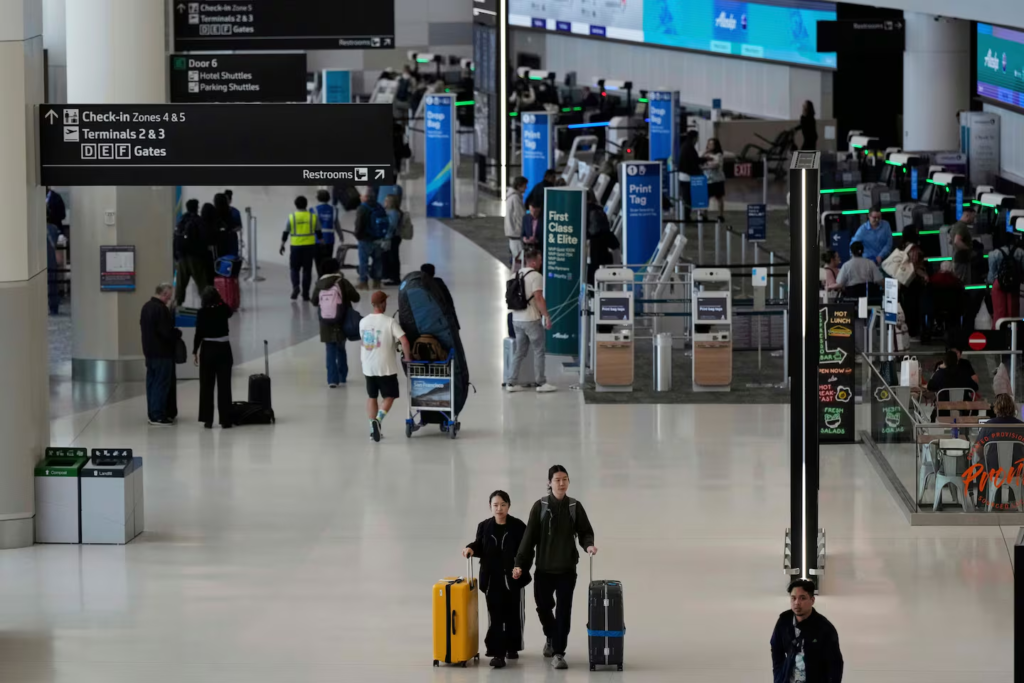The United States is preparing for a sharp decline in international tourism this summer, with travel industry analysts predicting a massive $12.5 billion loss in revenue. The downturn comes as millions of foreign tourists choose to skip their summer vacations in America, citing a mix of high costs, visa delays, safety concerns, and global travel shifts.
This unexpected economic hit could ripple across hotels, restaurants, airlines, and countless small businesses that depend on foreign visitors during peak travel months.
Tourism Industry Alarmed by Decline
According to the U.S. Travel Association, international visitors are spending significantly less time and money in the country compared to pre-pandemic levels. Experts believe the U.S. will welcome fewer than 60 million international tourists in 2025, well below the 79 million peak in 2019.

Source: U.S. Travel Association – Research
Geoff Freeman, President and CEO of the U.S. Travel Association, stated,
“America is missing out on billions in spending. International visitors are not coming at the pace we need. The longer we delay improvements in the travel experience, the more we fall behind.”
Top Reasons Tourists Are Skipping the U.S.
Several factors are contributing to this downturn:
- Expensive Flights: Airfare to the U.S. has remained 25-30% higher than other destinations like Southeast Asia or Europe.
- Lengthy Visa Wait Times: In some countries, tourist visa wait times for the U.S. still exceed 250 days.
- Safety Concerns: Gun violence and high-profile incidents have raised red flags for some travelers.
- Global Competition: Countries like Japan, France, and Australia are actively marketing and offering smoother entry for tourists.
Travel Hotspots Seeing Sharp Decline
Major U.S. cities and attractions that once thrived on foreign spending are now feeling the pinch:
- New York City: Projected to lose over $1.2 billion in foreign tourist revenue.
- Los Angeles: Expected shortfall of nearly $950 million.
- Orlando and Miami: Popular for theme parks and beaches, Florida is seeing reduced bookings from Europe and South America.
Additionally, luxury retailers and high-end restaurants in these cities are reporting lower foot traffic and declining sales, especially from high-spending foreign tourists.
The Ripple Effect on Local Businesses
For many small businesses, international travelers are vital. Foreign visitors often stay longer and spend more per day compared to domestic tourists. A report by the National Travel and Tourism Office (NTTO) highlights that overseas visitors typically spend $4,200 per trip, while domestic tourists average around $900.
This spending fuels:
- Boutique hotels and resorts
- Car rentals and local tours
- Dining, shopping, and cultural experiences
- Museums and entertainment venues
When these dollars vanish, it hits hardest in local economies that are still recovering from the pandemic downturn.
Industry Calls for Urgent Policy Changes
Tourism leaders and business groups are urging Washington to address this growing crisis. Some of their recommendations include:
- Hiring more visa officers to reduce processing delays
- Expanding the Visa Waiver Program to include more allied nations
- Boosting international marketing efforts through Brand USA campaigns
- Enhancing airport infrastructure and experience to be more traveler-friendly
Without immediate action, experts warn the U.S. could lose long-term market share in the global tourism industry.
Domestic Travel Remains Strong
While international tourism is dropping, domestic travel remains relatively healthy. Americans are still traveling across the country, boosting hotel occupancy in national parks, coastal regions, and entertainment hubs.

However, domestic tourists typically spend less than international ones, making it harder to compensate for the global drop-off.
For example, in 2024, international travelers made up just 15% of total visitors, but they accounted for nearly 40% of all spending in tourist-focused cities.
Long-Term Risks for American Hospitality
If this trend continues, it may reshape how U.S. tourism operates in the future. Hotels and entertainment providers may reduce staff, cut services, or even close down some operations.
According to a survey by the American Hotel & Lodging Association, 31% of hotels in major cities are planning to scale back staffing this summer due to lower international bookings.
Source: AHLA – Hotel Business Survey
Hope on the Horizon?
There are some signs of potential recovery. China recently lifted several outbound travel restrictions, and some visa processing improvements are in progress. If policy improvements are implemented quickly, the U.S. could still attract more travelers later in 2025.
Meanwhile, some travel startups and regional tourism boards are getting creative—offering curated cultural experiences, virtual pre-trip planning, and targeted promotions in countries like India, Germany, and South Korea.
Conclusion
The summer of 2025 may feel colder than usual for America’s tourism industry. With $12.5 billion at stake, foreign tourists’ absence could spell serious trouble for one of the nation’s key economic drivers. The solution, according to experts, lies in streamlined policies, international marketing, and creating a safer, more welcoming experience for visitors from around the globe.
Also Read – Trump Plans to Expand Travel Ban to 36 More Countries






